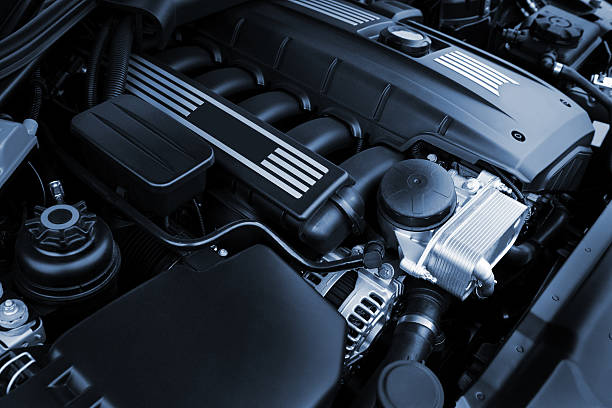Laser-Powered Ignition Systems: Revolutionizing Combustion Engines
The roar of an engine, the pulse of pistons, and the thrill of acceleration have long been hallmarks of automotive passion. But what if we could enhance these experiences while simultaneously boosting efficiency and reducing emissions? Enter the realm of laser-powered ignition systems, a cutting-edge technology poised to redefine the heart of internal combustion engines.

The Spark That Started It All
For over a century, the humble spark plug has been the go-to ignition method for gasoline engines. This simple yet effective device creates an electric arc to ignite the air-fuel mixture in the combustion chamber. However, as engines become more advanced and efficiency demands increase, the limitations of traditional spark ignition are becoming apparent.
Spark plugs face several challenges in modern engines. They’re subject to wear and fouling, which can lead to misfires and reduced performance. Additionally, their fixed position in the cylinder head limits optimal combustion, especially in high-compression or lean-burn engines. These limitations have spurred engineers to seek alternative ignition methods, with laser ignition emerging as a promising contender.
The Science Behind Laser Ignition
Laser ignition systems replace the conventional spark plug with a focused laser beam. This beam is generated by a compact, high-powered laser diode and directed into the combustion chamber through a specially designed optical window. When the laser pulses, it creates a plasma spark that ignites the air-fuel mixture.
The key advantage of laser ignition lies in its precision and flexibility. Unlike a spark plug, which is limited to a fixed location, a laser can be focused at multiple points within the combustion chamber. This allows for optimized ignition timing and location, leading to more complete combustion and improved engine efficiency.
Advantages Over Conventional Ignition
Laser ignition systems offer several compelling benefits over traditional spark plugs:
-
Enhanced Efficiency: By allowing for more precise control over the ignition process, laser systems can improve fuel efficiency by up to 27% in some engine designs.
-
Reduced Emissions: More complete combustion means fewer unburned hydrocarbons and lower overall emissions.
-
Improved Cold Starts: Laser ignition systems can provide more reliable ignition in cold conditions, reducing the need for rich fuel mixtures during startup.
-
Extended Maintenance Intervals: Without the wear and tear associated with spark plugs, laser ignition systems promise longer service life and reduced maintenance needs.
-
Higher Compression Ratios: Laser ignition enables the use of higher compression ratios, which can boost engine power and efficiency.
Overcoming Technical Hurdles
While the potential of laser ignition is clear, several technical challenges must be addressed before widespread adoption becomes feasible. One of the primary hurdles is the development of laser diodes capable of withstanding the harsh environment inside an engine cylinder. High temperatures, vibrations, and contaminants all pose significant challenges to the delicate optics required for laser ignition.
Another obstacle is the need for a clear optical path into the combustion chamber. This requires redesigning cylinder heads to incorporate optical windows that can withstand the extreme pressures and temperatures of combustion while remaining transparent to the laser wavelength.
Power requirements are also a concern. While modern laser diodes are becoming increasingly efficient, they still require more energy than a traditional spark plug system. Engineers are working on solutions to minimize power consumption and integrate laser ignition systems with existing vehicle electrical systems.
Real-World Applications and Future Prospects
Despite these challenges, several major automakers and research institutions are making significant strides in laser ignition technology. Prototype engines equipped with laser ignition systems have demonstrated promising results in laboratory settings, showcasing improved efficiency and reduced emissions.
One particularly exciting application is in natural gas engines, where laser ignition can overcome the limitations of traditional spark plugs in igniting lean fuel mixtures. This could lead to more efficient and cleaner-burning natural gas vehicles, both for passenger cars and heavy-duty trucks.
In the realm of high-performance engines, laser ignition offers the potential for more precise control over combustion timing and multiple ignition points. This could result in engines that are not only more powerful but also more fuel-efficient and environmentally friendly.
The Road Ahead
As with any emerging technology, the path from laboratory to production is fraught with challenges. Cost remains a significant barrier, with current laser ignition systems being considerably more expensive than traditional spark plug setups. However, as the technology matures and economies of scale come into play, these costs are expected to decrease.
Regulatory hurdles also need to be addressed. Safety standards and emissions regulations will need to be updated to account for the unique characteristics of laser ignition systems. This process will require close collaboration between automakers, regulators, and safety experts.
Despite these obstacles, the potential benefits of laser ignition are too significant to ignore. As we move towards a future of increasingly stringent emissions standards and the need for more efficient vehicles, laser ignition systems may well become a crucial technology in keeping the internal combustion engine relevant in the age of electrification.
The automotive world stands on the cusp of a new era in engine technology. Laser-powered ignition systems represent not just an incremental improvement, but a fundamental reimagining of how we harness the power of combustion. As this technology continues to evolve, it promises to deliver engines that are cleaner, more efficient, and more powerful than ever before. The future of automotive engineering is bright indeed—laser bright.





